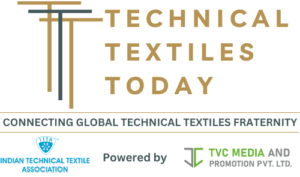
Algen as a raw material for biosynthetic facilities, Laub for cell and packaging, plant-based surface material for vehicle interiors, and many more uses The nominees for the awards are such as varied as the Cellulose Fibres Conference 2025’s annual theme spectrum
Hürth, January 13, 2025: The cellulose fibre industry will once again be looking towards Köln with renewed interest on March 12 and 13. These products have been nominated for the coveted Innovationspreis. Six outstanding applications were chosen by the jury, who used their innovative products that aim to create a more sustainable future.
Each year, the Nova Institute, a conference organiser, teams up with the award-winning GIG Karesk company, which is distinguished by its innovativeness, technological advancement, and ecological impact. The goal of prices is not just the winner’s creative products. not just to be honoured, but also to serve as a symbol of the willingness to innovate.
The nominees’ product representations, the vote, and the price are held during the conference on March 12. The three winners can be chosen by the participants in person. More than 220 people are anticipated.
The Nominated Fibers365 (DE): Hanf365: Economical Decorations and Support Materials The idea of “Hanf365” is the creation of an affordable, environmentally friendly Dekorations and auxiliary materials are made by chemically processing a local agricultural fibre, processing short fibres in a nassvlies process, and drastically reducing their strength and functionality. Less than 7% of the material is non-fiber, and it is also made from biodegradable and biogenom materials. Hanf365 is vegan and entirely natural. It was developed in collaboration with a car manufacturer for both consumer (modern) and industrial applications. fibers365.com
Releaf Paper France (FR): Releaf Fibre: Eco-friendly paper from urban waterfalls
Releaf Paper France provides an environmentally friendly substitute for common hardwood-based paper by converting urban waste into sustainable cellulose fibres. Through the firm’s Extraction at low temperatures isolates high-quality flakes with exceptional papierbildenden properties. With a cellulose content of 32–48% and characteristics similar to those of hardwood, leaf-fasers are perfect for packaging materials including well paper, cartons, and towels. This novel approach, which only requires a minimal amount of water and non-aggressive solutions, aligns with the principles of circular economy by supporting global brands in the development of sustainable packaging solutions and revaluing millions of tonnes of urban wastewater. releaf-paper.com
SA-Dynamics (DE): Textiles, Cellulose, and Aerogel: Next-Generation Materials
Cellulose-aerogel textiles are revolutionary materials made entirely of biodegradable cellulose-aerogel fibres. They combine the excellent thermal properties of aerogels with the flexibility and ease of processing of more versatile materials, by which they Utilise a novel aerogel fibre process. They are simple, very effective, compatible with common textile machines, and offer a sustainable substitute for isolated materials made of fossil fuels. as well as tierischer Basis. Vollständig recycelbar und frei von Mikroplastikemissionen, setzen Cellulose- Aerogel-Textilien einen neuen Maßstab für Lösungen der Kreislaufwirtschaft in der Textil- und Bauindustrie. Erste funktionale Demonstratoren wurden im Rahmen von zwei Projekten entwickelt, die
von Biotexfuture bzw. RWTH Innovation gefördert wurden. sa-dynamics.com
Sci-Lume Labs (US): Bylon®: Eco-friendly circular fibres from land-based accidents
Sci-Lume Labs presents Bylon®, a cyclic, biosynthetic, skalierable product. Through the use of very effective chemical procedures, land economic abfällen may be evaluated. Bylon® seamlessly integrates into every stage of the global value chain, from the production of raw materials to the textile industry. Bylon® unterscheidet sich von herkömmlichen und neuartigen Materialien, weil es gleichzeitig bio-basiert, aus Abfällen gewonnen, abbaubar, recycelbar, stromabwärtskompatibel und schmelzspinnbar ist. Bylon® bietet außerdem ein einzigartiges Leistungsprofil, indem es die mechanischen Eigenschaften und die Anpassungsfähigkeit herkömmlicher Kunststoffe mit den Feuchtigkeitseigenschaften und der Kreisform von Naturfasern kombiniert. Da Bylon® keine Änderungen in der Lieferkette erfordert, ermöglicht es der Industrie, ihre Umweltauswirkungen zu reduzieren – ohne Kompromisse bei Qualität, Leistung oder Kosten. sci-
lumelabs.com
TMG Automotive (PT): REFIBER: Plant-based sustainable surface material
In the automotive industry, textile-based verbund solutions are becoming more and more popular, especially for functional and decorative interior space applications. Innovative leather made from plants exemplifies this trend by fusing sustainability with cutting-edge performance. Entwicked from an When combined with cellulose waste, biopolymer matrix transforms these materials into a high-quality, environmentally friendly solution. Both the textile backside and the laminate backside are made entirely of cellulose fibre, resulting in a fully integrated biobased verbundstoff. This lightweight, long-lasting, and aesthetically pleasing material, which was developed, among other things, for vehicle interiors, sets a new benchmark for sustainable design while also satisfying the industry’s growing need for environmentally friendly and reusable alternatives. tmgautomotive.pt
Uluu (AU): Natural, algen-derived materials are used to make plastic in textiles.
Uluu is an Australian startup that uses natural polymers (PHA) to break down plastic. The ingredients of Uluu are made from a renewable resource: algen that has been cultivated, via which the abundance of fossil fuels and plants is reduced. In Uluu Textiles, which are developed in collaboration with Deakin University, have the properties of synthetic polyester yet are biocompatible and biodegradable, preventing microscopic contamination in the mode. It is crucial that the Uluu-Material Reusable, recyclable, and most importantly, compostable. They are naturally made by a special fermentation process that uses seawater, saltwater mikroben, and algae. Uluu-Pellets may be used directly in place of plastics (such as polyester and nylon) in existing smelt machines, resulting in a tangle that can be twisted or woven into a texture. In addition to Faserpellets, Uluu also offers other Pelletsorten made of plastic that are used in Knöpfen, Sonnenbrillen, Haarspangen, and packaging. uluu.com.au
